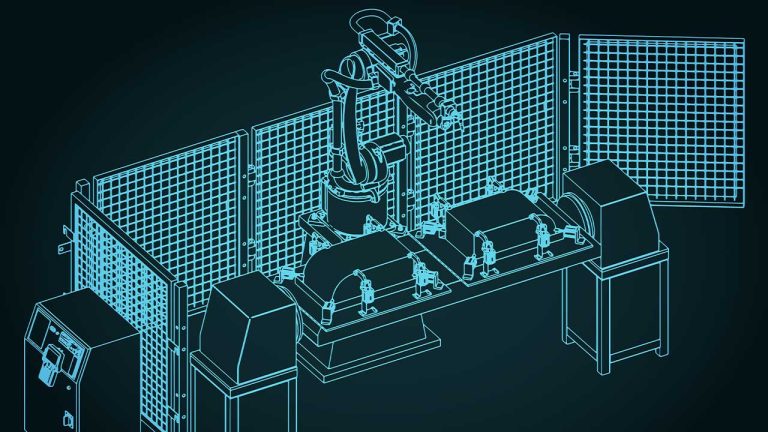Preparing for the AI-Driven Future in Manufacturing: Strategies for Business Leaders
As artificial intelligence (AI) continues to revolutionize industries, leaders must prepare their organizations to harness AI’s potential for value generation. This involves not only adopting new technologies but also fostering a culture of innovation and continuous improvement. By focusing on specific areas, leaders can ensure their businesses are ready to leverage AI effectively.
Start Small, Think Big
One of the most effective ways to integrate AI into a business is to start with specific, achievable use cases. This approach allows organizations to demonstrate value quickly and build momentum for broader AI initiatives. Leaders should maintain a broader vision for digital transformation, understanding how AI can impact the entire business. This balance between immediate wins and long-term goals is crucial for sustained AI-driven value generation.
Empower Your Workforce
Treating all employees as knowledge workers is essential in an AI-enabled workplace. Providing training and tools to leverage AI in their roles can democratize data access and foster a culture of continuous improvement. Empowering the workforce ensures that every employee can contribute to and benefit from AI advancements. This includes:
- Training Programs: Offering comprehensive AI and data literacy programs to upskill employees.
- Accessible Tools: Implementing user-friendly AI tools that employees at all levels can use.
- Encouraging Innovation: Creating an environment where employees feel comfortable experimenting with AI-driven solutions.
Prioritize Data Strategy and Integration
A robust data strategy is the foundation of successful AI implementation. Leaders must ensure data quality, accessibility, and integration across different systems and devices. This involves:
- Data Quality: Establishing processes to ensure the accuracy and reliability of data.
- Data Accessibility: Making data easily accessible to those who need it.
- System Integration: Using modern communication protocols (like SQL, MQTT, OPC UA, and REST APIs) to facilitate seamless data exchange and integration.
Embrace New Technologies
Adopting modern communication protocols and technologies is critical for unlocking AI’s full potential. Implementing technologies like SQL, MQTT, OPC UA, and REST APIs enables efficient data exchange and integration, which are essential for AI-driven insights. Leaders should stay abreast of technological advancements and be ready to incorporate them into their digital strategy.
Address Bias Proactively
AI systems are only as good as the data and algorithms that power them. To ensure equitable outcomes, leaders must address potential biases in AI algorithm design, data set selection, and training processes. This involves:
- Diverse Teams: Ensuring diversity of thought in AI development teams.
- Bias Audits: Regularly auditing AI systems for bias and making necessary adjustments.
- Inclusive Data Sets: Using diverse data sets that represent different demographics and scenarios.
Collaborate Across Departments
Closer collaboration between operational technology (OT) and information technology (IT) teams is essential for bridging the gap between manufacturing processes and data-driven insights. This collaboration ensures that AI solutions are practical, effective, and aligned with business goals. Leaders should encourage cross-departmental projects and foster a culture of teamwork.
Empower Teams for IIoT Advancements
The Industrial Internet of Things (IIoT) presents additional opportunities for AI-driven improvements. Leaders can prepare for future IIoT advancements by:
- Providing Resources: Ensuring team members have the necessary tools and support to develop IIoT solutions.
- Fostering Continuous Improvement: Encouraging a culture of Kaizen, where employees constantly seek ways to improve processes.
- Recognizing Contributions: Celebrating small wins and acknowledging team members’ efforts to build enthusiasm for IIoT initiatives.
- Developing Skills: Offering training programs to equip employees with the skills needed for an IIoT-enabled workplace.
By focusing on these key areas, leaders can create an environment primed for AI-driven value generation. This involves not only technological adoption but also cultural transformation, where employees are empowered, data is strategically managed, and cross-departmental collaboration is encouraged. Preparing for an AI-driven future is a multifaceted endeavor that, when approached thoughtfully, can lead to significant competitive advantages.
Source: “Unlocking the Potential: Exploring the Most Valuable IIOT Devices You Already Use” session sponsored by Omron at the IIoT World Manufacturing Days. This is an excerpt from the discussion summarized by notebooklm anc chatGPT based on the session’s video transcript. It was verified and edited by IIoT World’s team. For more insights, watch the session on-demand.



